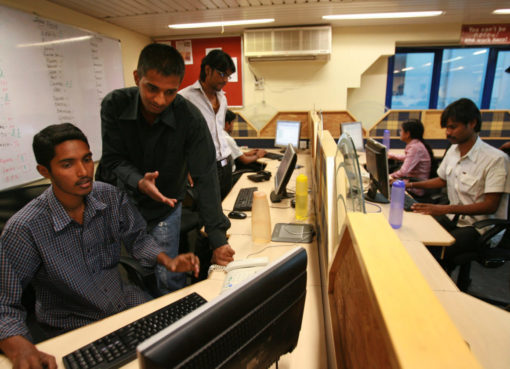As the digital asset space is transforming from a niche market into an alternative investment class with participation from a wide range of players, headline-grabbing failures such as FTX, Three Arrows Capital, Voyager Digital, and now BlockFi have negatively affected public perception of the industry, highlighting the need for safe and regulated solutions.
2021 saw institutional interest in crypto soar. Institutional clients — primarily hedge funds, registered investment advisers and some companies — traded US$1.14 trillion worth of cryptocurrencies on Coinbase alone, up from US$120 billion the year before. This year has seen the industry come down from these lofty heights, and as the industry deals with the reality of what’s been happening, it is more important than ever to define a fit-for-purpose regulatory framework for digital assets. It also behooves institutions to work with partners that hold themselves to the highest level of best practices such as robust compliance standards, a high degree of good governance, and management expertise that includes a strong risk management culture.
Looking across the Asia-Pacific (APAC) region, we have a mixed bag of institutional interest. Vietnam is the frontrunner in the list of countries in Southeast Asia most quickly adopting crypto, but its government does not yet recognize cryptocurrencies as legal tender. Thus, financial institutions are entirely barred from handling them there.
At the other end of the spectrum, we see jurisdictions such as Hong Kong and Singapore making strident attempts to create regulatory frameworks designed to ensure that crypto can safely take its place in the financial sector. Countries such as Japan have a legal framework for stablecoins, while other countries such as Australia and India are clarifying taxation matters relating to crypto investments — an important step in ensuring the legitimacy of crypto within the financial system.
Research by Accenture reveals that over half of affluent individuals in Asia hold crypto in their portfolio, but two-thirds of wealth management firms in Asia have no plans to offer any form of digital asset proposition — and those that do by and large only target custody of digital assets.
It is our collective hope that regulatory changes in Hong Kong and Singapore act as a spur to institutional interest in crypto across APAC. But it’s also important to look at what have been some of the barriers to adoption to date.
Crypto’s image, and security concerns
A lack of clarity around regulations as well as concerns about asset security are the main culprits, but things are starting to change.
Regulatory clarity is crucial in the development of any financial market, and this is particularly true with crypto. With a stringent licensing process for virtual asset service providers (VASPs), countries such as Singapore can be considered a leader when it comes to crypto regulation. Business dealings that have to do with crypto generally fall under the Payment Services Act, an act serving to provide consumer safeguards and regulate payment systems in Singapore.
Singapore has also passed the Financial Services and Markets Bill, which will refine the requirements of regulations for crypto and other financial services. Additionally, Hong Kong is looking towards potentially allowing retail investors to invest in crypto providing robust guardrails are in place.
The combination of emerging regulatory clarity and an open constructive dialogue between various stakeholders in jurisdictions such as Hong Kong and Singapore will hopefully give institutions more confidence in this asset class. More importantly, indications on how digital assets are to be treated in Hong Kong and Singapore — both of which are undergoing consultation processes with results due at the end of this year — will hopefully encourage other Asian countries to follow suit.
As for asset security concerns, our view is these can be alleviated when institutions work with regulated digital asset platforms that use proprietary technology to safely store digital assets, and utilize a custody exchange network framework that assures that client funds never get commingled. As institutions partner with secure, compliant crypto custodians, trust in the sector will grow.
Blockchain technology’s potential
Aside from crypto as an investment asset, we are actively encouraging institutions to open their eyes to the immense potential of blockchain technology — the technology powering crypto — as a conduit to the next wave of innovation in finance. Blockchain can help solve longstanding issues in the financial system, such as counterfeiting, double spending, and delivery failures. It can also optimize and bring cost efficiencies to functions such as borrowing and lending, collateral management, and settlement.
Beyond cryptocurrencies, blockchain technology will bring about nothing less than a transformation in the way we interact with money, but it will take a large, collective effort by the finance sector to build the future rails for the financial industry.
The challenge is that legacy financial institutions are not technology companies. Although there has been plenty of innovation in the past few decades, behind-the-scenes wire transfers and other back-office functions still operate much as they have in the past. That’s largely by design, to maintain operational stability and security — yet it explains why these institutions move slowly and carefully when it comes to building new technology.
In order to realize the potential of blockchain while maintaining market stability, financial institutions need to work with technology companies that have expertise in the fast-moving digital assets realm and the regulatory structure that institutions need for their own compliance.
A vision for the future
Having a secure, compliant method that will empower asset managers to incorporate crypto as an investment product and blockchain technology as the highest-performing assets of today into their portfolios is an important step. As much as it is important the industry learns from the lessons of 2022, institutions should also not be distracted from the possibilities of what blockchain technology and crypto can be a catalyst for. Hence, there is an urgent need for all stakeholders to collaborate on a vision of what a shared financial future looks like while proactively implementing appropriate safeguards so that what took place in 2022 can never occur again.
Lastly, it’s not just about institutions enjoying the benefits of blockchain technology and investing in crypto and digital assets. Blockchain innovations can help empower people, too, in their day-to-day lives.
Reflecting on the past 20 years, it is difficult to imagine the impact of the internet and smartphones on everyday life. Now, almost everyone would be lost without these vital tools. Similarly, blockchain technology and cryptocurrency have the potential to transform the financial system with greater transparency and accountability, not to mention operational efficiencies that will result in cost savings that can be passed on to end consumers. We believe that blockchain technology will also be the catalyst for a more inclusive financial system, removing the barriers for today’s unbanked to participate in and benefit from financial services.
Consumers in Asia are clearly receptive to crypto adoption, as evident from the Asian market accounting for 43% of global cryptocurrency activity, with US$296 billion in transactions from June 2020 to June 2021.
Seeing that the industry may well be getting clearer regulatory pathways and the technology exists for institutions to protect their digital assets, it is only a matter of time before a rapidly growing segment of institutional players in Asia will become full participants in the blockchain economy.
____________________________
This opinion piece is intended for informational purposes only. It is not to be construed as and does not constitute an offer to sell or a solicitation of an offer to purchase any securities in Anchor Labs, Inc., or any of its subsidiaries, and should not be relied upon to make any investment decisions. Furthermore, nothing within this article is intended to provide tax, legal or investment advice, and its contents should not be construed as a recommendation to buy, sell, or hold any security or digital asset or to engage in any transaction therein.




